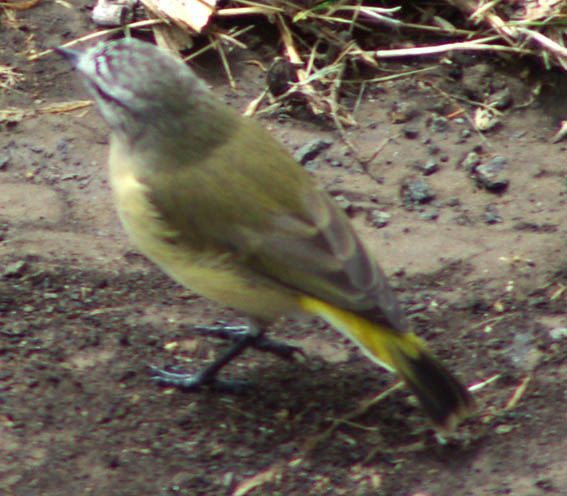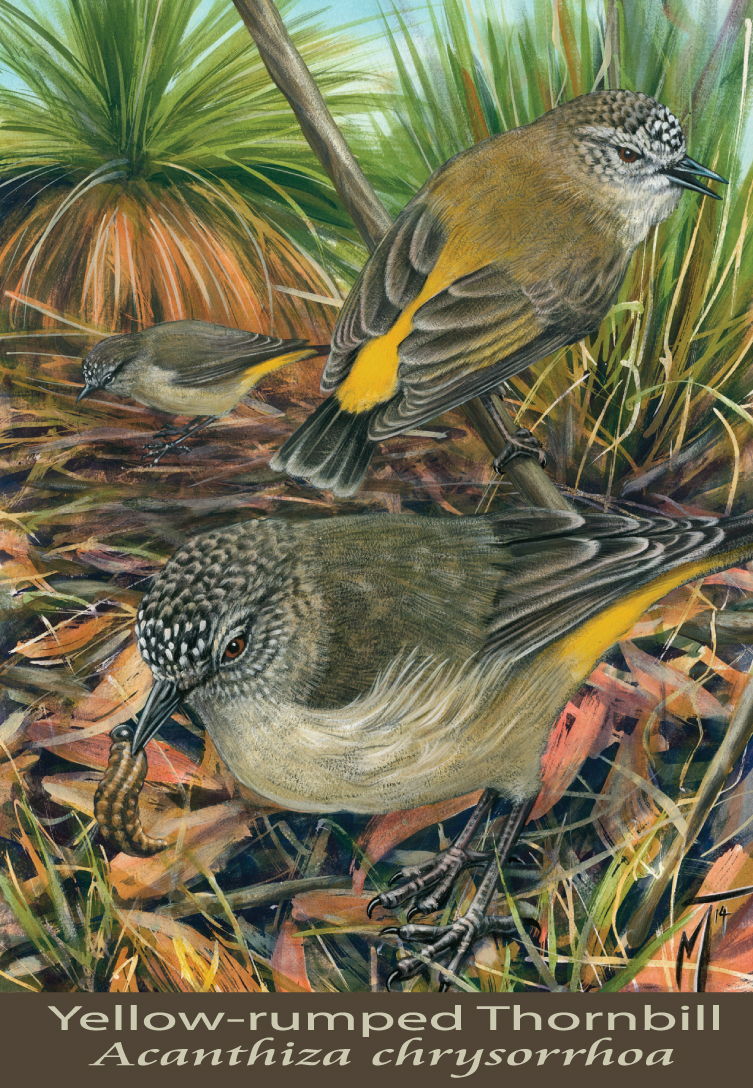

Easily distinguished from other Thornbill species by its yellow rump and strongly-spotted forehead. It is most frequently seen feeding on the ground in small flocks, often in parks, gardens, open forest, woodland, grasslands and farms. Its range covers the southern two-thirds of Australia. It particularly favours the introduced Cypress, often building its nest at the end of a low branch. This nest is a hollow dome of grasses, moss and spider web.
On top of the dome is a cup-shaped depression that serves as a false nest, while the real nest is inside with a concealed entrance. Bronze-cuckoos certainly aren't tricked by it, and prefers this bird as a host to its eggs. The female lays and incubates 3 to 4 lightly-spotted white eggs. Both parents feed the young.
Size: 11 - 13 cm
Photo and Illustration: Mark Trinham.